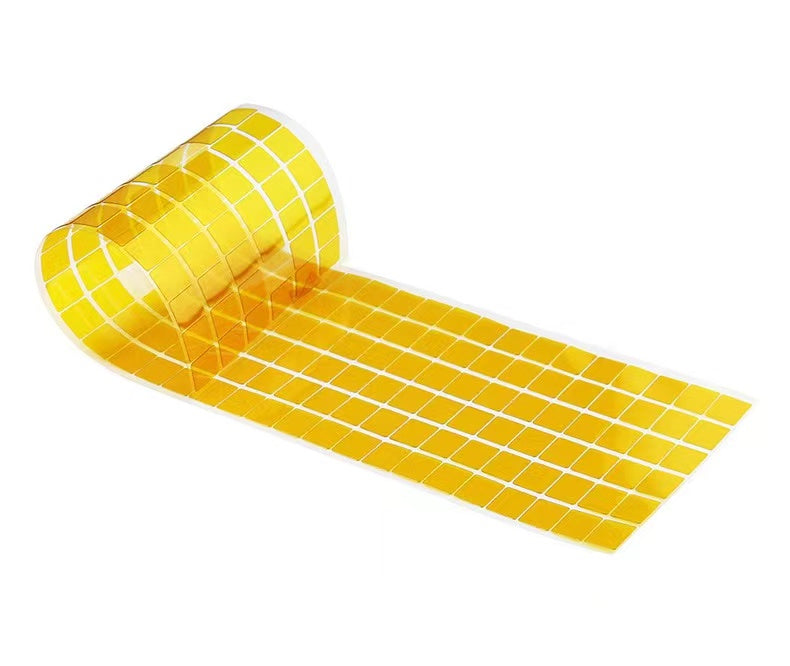
Die-Cut Polyimide Tape: Precision Kapton Solutions for Electronics
Share
What is Die-Cut Polyimide Tape?
Polyimide tape (commonly known as Kapton tape) is a high-performance material renowned for its extreme heat resistance, electrical insulation, and chemical stability. When precision die-cut into custom shapes, it becomes an indispensable solution for electronics, aerospace, automotive, and industrial applications.
Die-cutting allows manufacturers to create complex adhesive components with tight tolerances, ensuring perfect fit and functionality in specialized environments.

Key Advantages of Die-Cut Polyimide Tape
1️⃣ Custom Shapes for Precision Applications
Laser or die-cut into exact dimensions (gaskets, insulators, spacers).
Ideal for PCB shielding, flexible circuits, and coil insulation.
2️⃣ High-Temperature Resistance (Up to 260°C / 500°F)
Withstands soldering, reflow, and thermal cycling without degrading.
Protects sensitive components in automotive, aerospace, and LED lighting.
3️⃣ Superior Electrical Insulation
Dielectric strength prevents short circuits in high-voltage applications.
Used in battery insulation, motor windings, and EV components.
4️⃣ Chemical & Abrasion Resistance
Resists solvents, oils, and acids—unlike standard tapes.
Maintains adhesion in harsh environments (industrial machinery, oil & gas).
Top Applications of Die-Cut Polyimide Tape
✔ Electronics:
Flexible PCB stiffeners – Reinforces thin circuits.
EMI/RFI shielding – Custom masks for sensitive components.
✔ Automotive & Aerospace:
Wire harness insulation – Prevents heat damage in engines.
Sensor protection – Precision-cut for tight spaces.
✔ Medical Devices:
Sterilizable adhesives – Withstands autoclaving.
Wearable tech – Thin, flexible, and biocompatible.
✔ Energy & Industrial:
Solar panel edge sealing – UV-resistant barriers.
Transformer insulation – High-voltage safety.